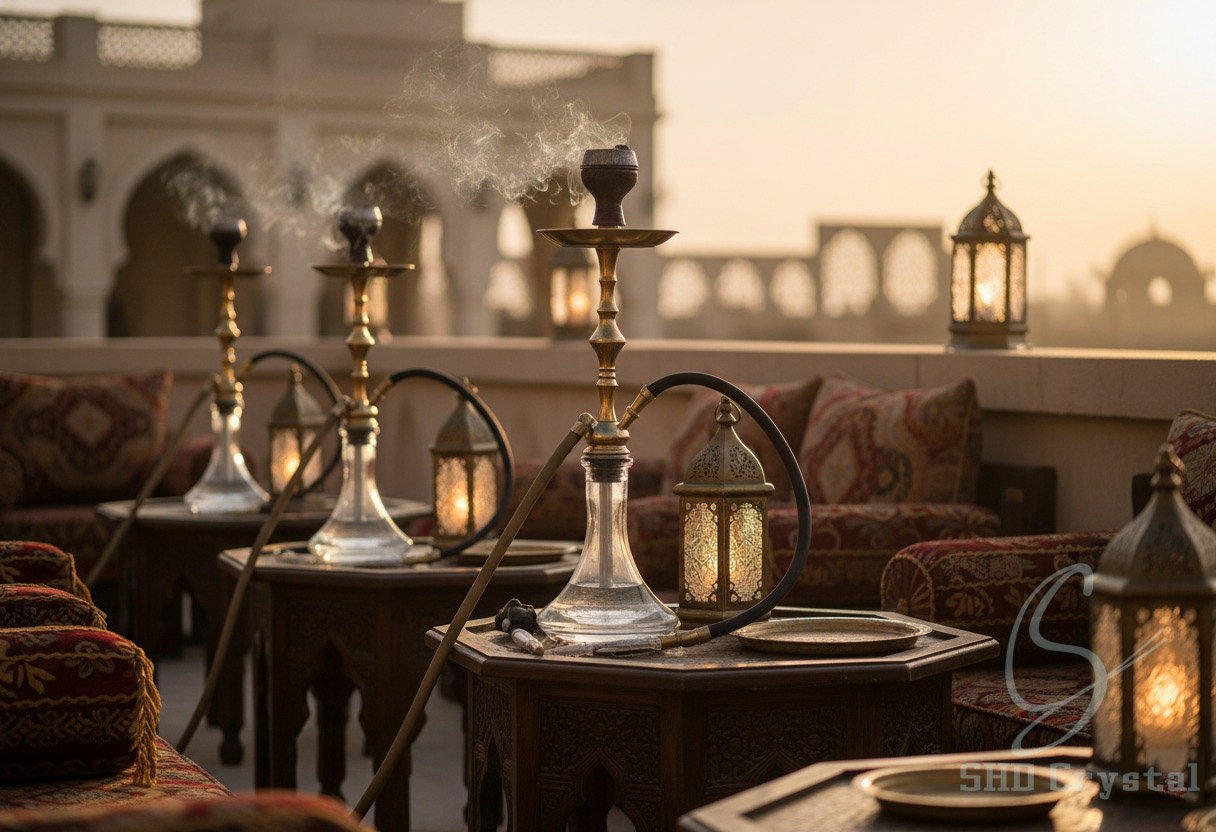> Blogs > Hookah Culture in Middle Eastern Countries: Timeless Social Art
Hookah Culture in Middle Eastern Countries: Timeless Social Art
Core keywords: hookah culture in Middle Eastern countries, traditional shisha rituals, Middle Eastern hookah craftsmanship
The hookah culture in Middle Eastern countries represents more than leisure—it is a living emblem of conversation, community, and craftsmanship. In cafés and homes across Cairo, Beirut, Amman, and Muscat, sharing a waterpipe is a ritual of friendship and hospitality. While modern lounges update design and flavor, the underlying principle remains unchanged: balance, respect, and connection through the rhythm of smoke and talk.
Understanding Hookah Culture in Middle Eastern Countries: From Heritage to Modernity
To appreciate hookah culture in Middle Eastern countries, one must read it through the lenses of tradition, craftsmanship, and adaptation. Historically, the waterpipe spread along trade routes from Persia and India into the Arab world, absorbing local customs along the way. Today, its evolution continues—stainless stems replace brass, and flavor blends diversify—yet the etiquette of sharing, preparation, and patience remains sacred.
Each element of the hookah embodies regional identity. The hookah base, often hand-blown glass or crystal, anchors both aesthetics and performance. In the Levant, elegant symmetry and transparent color reflect refinement; in the Gulf, heavy-bottomed bases symbolize stability and abundance. The vessel’s shape affects draw quality and cooling efficiency, demonstrating how Middle Eastern hookah craftsmanship brings physics and artistry into balance.

Traditional Shisha Rituals and Etiquette
Within hookah culture in Middle Eastern countries, etiquette defines respect. Guests are served first, the hose is never pointed, and fresh mouthpieces are offered before every session. Lighting coals or changing flavors is often entrusted to the most experienced person in the group. Families maintain traditional shisha rituals during holidays—cleaning each component, filling the water to the base curve, and testing airflow before the first puff. These small ceremonies transform casual smoking into a collective art of care, reinforced by generations of Middle Eastern hookah craftsmanship.
Craftsmanship and Symbolism
From the hand-thrown clay bowl to the polished stem, craftsmanship mirrors cultural expression. The hookah base acts as a visual centerpiece, with artisans engraving motifs drawn from Arabic geometry or calligraphy. Material science intersects with artistry: thick borosilicate glass enhances heat resistance, while balanced weight ensures stability during long sessions. These traditions are maintained through Middle Eastern hookah craftsmanship, which preserves local identity while refining performance. Every part reflects regional mastery—proof that hookah culture in Middle Eastern countries endures not by habit but by thoughtful design.
Regional Variations and Modern Interpretations
Different regions shape distinct experiences. Egyptian cafés favor sweet, fruit-forward blends; Lebanese venues emphasize conversation and subtlety; Gulf lounges invest in high-end service with temperature-controlled coals. Meanwhile, a new generation integrates technology—silicone hoses, quick-release seals, and improved filtration systems—without losing the essence of traditional shisha rituals. In every region, Middle Eastern hookah craftsmanship guides the blend of innovation and heritage, ensuring cultural continuity across modern environments.
Expert Insight and Traveler‘s Perspective
Cultural historians note that the waterpipe functions as “architecture for dialogue”—its slow rhythm regulates conversation flow. Travelers are encouraged to observe before partaking, mimicking local mannerisms such as offering the hose with the right hand and thanking the host before leaving. Experienced users emphasize that even the quiet bubbling in the hookah base is part of the ambiance—a sensory heartbeat of the gathering.
Conclusion
Ultimately, hookah culture in Middle Eastern countries is a celebration of time, taste, and togetherness. Its endurance across centuries reflects the beauty of shared tradition and the adaptability of craft. By honoring traditional shisha rituals, maintaining quality through thoughtful design, and appreciating the legacy of Middle Eastern hookah craftsmanship, this heritage continues to bridge generations and invite meaningful conversation.
Discover the spirit behind hookah culture in Middle Eastern countries. Learn authentic traditional shisha rituals, explore artisan-crafted designs, and select your ideal hookah base to experience cultural depth and craftsmanship refined through centuries.

- : info@shdcrystal.com
- : +86-755-2335 8353
- : No. 68 Shasong Road, Shajing Street, Bao'an District, Shenzhen, Guangdong Province
Follow us